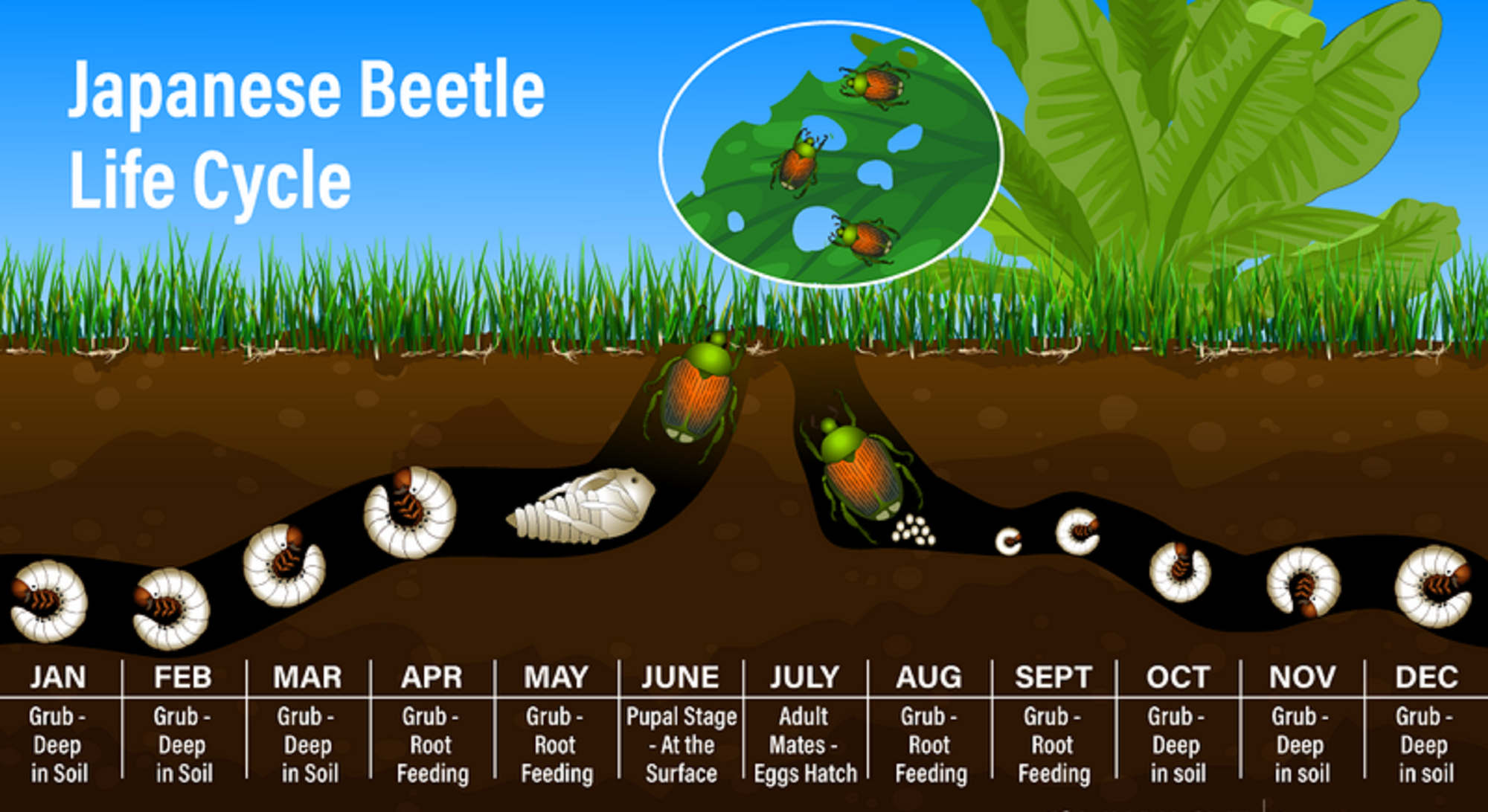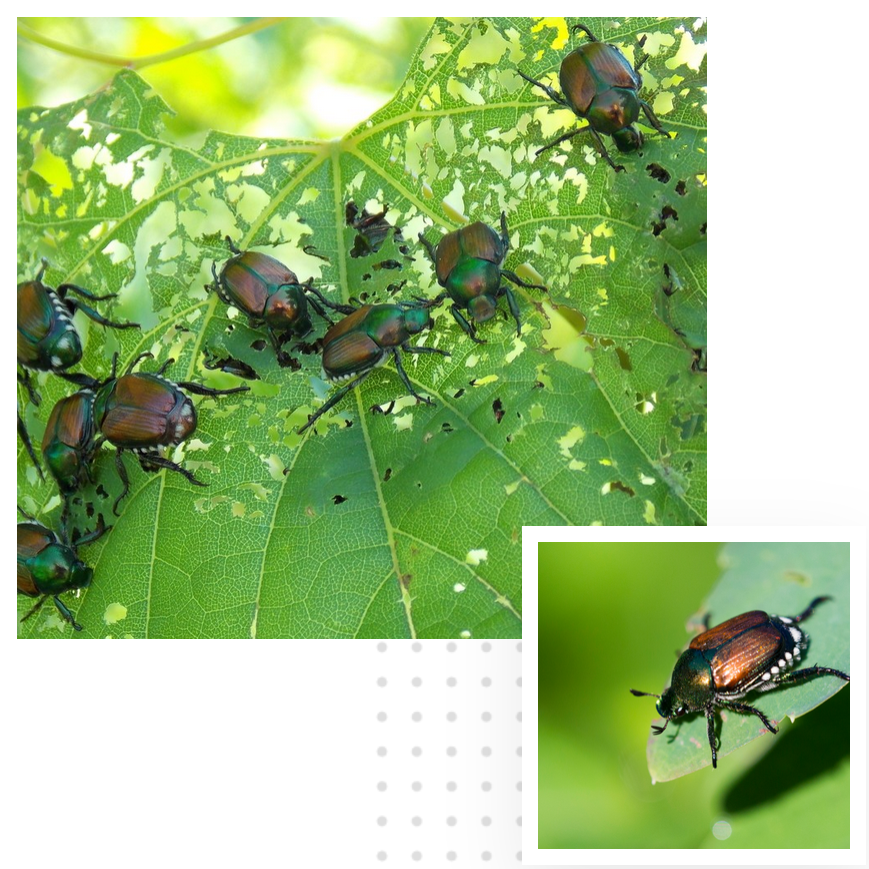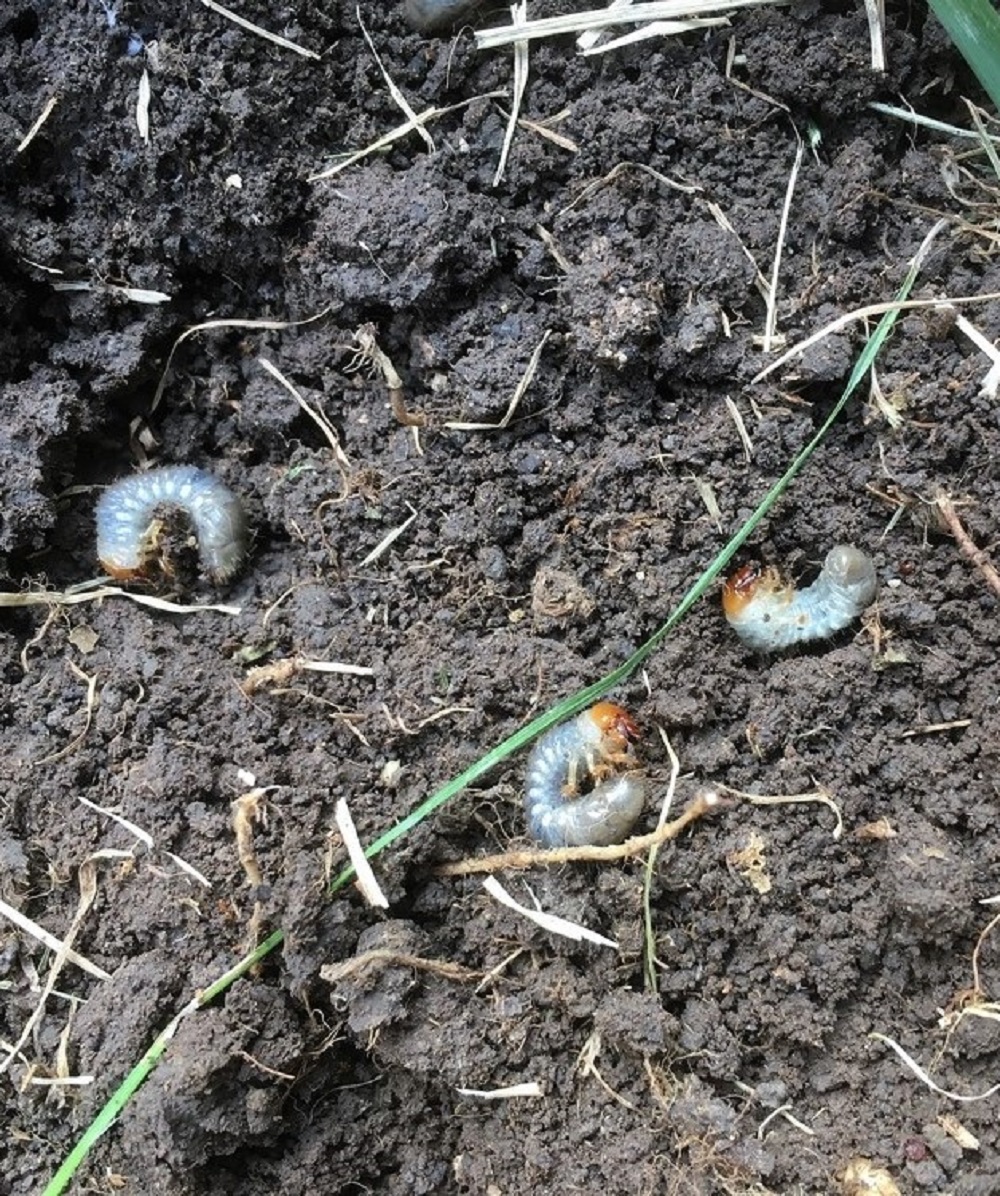Japanese beetle was first detected in BC in 2017, in the False Creek area of Vancouver. In 2021, it was detected in Burnaby, Port Coquitlam and Vancouver.
Japanese beetle is an invasive, regulated pest that feeds on the roots of turf grass, and on the foliage of more than 300 plant species, including: roses, fruit trees, grapevines, and other common landscape and food plants. If this pest spreads, it could cause serious harm to the local agricultural sector and ecosystem, and will cause significant damage to lawns, landscapes, golf courses, gardens and parks.




